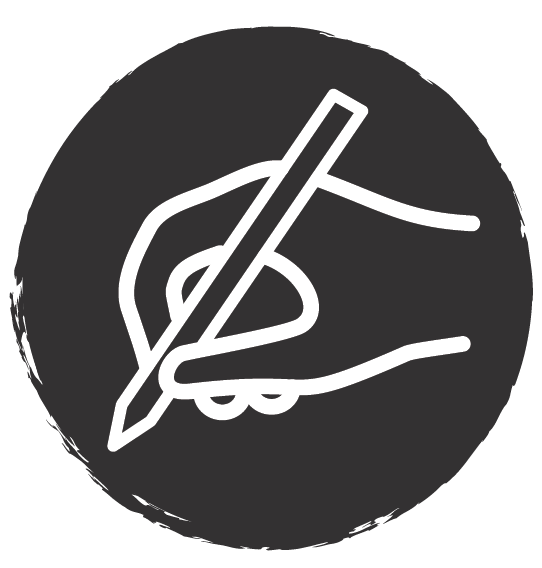
Services We Offer
-

Capacity Building
We listen, and we love to share skills to build capacity toward Aboriginal led cultural heritage management
-

Education
We facilitate heritage focused education in Australia for teachers, classrooms or students
-

Geospatial
We develop, and share, cutting edge geospatial solutions and web mapping in the cultural heritage management space
-

Research
We facilitate heritage focused research driven by Aboriginal groups or broader community
-

Partnership
We listen, we are open to ideas and exploring new ways to contribute to the future of heritage
Everick Foundation are passionate about sharing archaeology and cultural heritage skills and knowledge.
We listen to Aboriginal groups. We offer our skills if requested, and say yes to opportunities to share our archaeology, heritage or geospatial skills with groups to support them managing their own cultural heritage in today’s environment.
We provide engaging interactive education on the topics of cultural heritage and archaeology. We believe that learning is a mutual exchange of knowledge and experience and that archaeology belongs to everyone.
Everick Foundation are always looking for challenge. We love exploring new ways to contribute to the future of heritage. If you have an emerging heritage idea, we’d love to discuss it.
Further examples of services
Community Engagement
We love to get out into communities, whether that be working with Indigenous groups, classrooms, teachers or the general public. Everick provides presentations and hands-on workshops on the topics of archaeology. We believe that learning is a mutual exchange of knowledge and experience and archaeology belongs to everyone.Intangible Heritage / Anthropological and Ethnographic Analysis
The use of anthropology and ethnographic research techniques allows for the documentation and understanding of intangible, living heritage. First Nations People maintain connections with their ancestors via song, dance, stories and other traditional knowledge. It is important to undertake intangible heritage analysis because this reinforces connections between the past and present for First Nations Peoples and contributes towards cultural continuity for future generations. Everick has qualified anthropologists sub-contracted and on staff to ensure that intangible heritage is recorded and preserved.Historic Analysis
The analysis of historic artefacts includes any material remains dating to the contact period between Europeans and First Nations People, or after European settlement in Australia. Our team is capable of assessing complete or partial structures (buildings, bridges, other early infrastructure), in addition to various artefact types such as metals, glass and ceramics. Understanding these materials often requires the principles of Relative Dating in that absolute metrics, like Radiocarbon dating, are not possible because the material is too recent. Therefore, other comparative deductions regarding design and manufacture are used to help develop site chronology. For example, physical and digital reference collections, databases and archives are often utilised to help piece together site chronology and cultural heritage value.Resistographs
A resistograph is a machine used to determine tree age. Whilst the device was originally designed to test for decay and tree health, resistographs are now widely used to determine the age of trees. The machine utilises a micro drill bit, which passes through the wood to an approximate depth of 40 centimetres. The resistograph is sensitive enough to detect the soft and hard wood of tree growth rings, which causes a change in resistance on the drill bit that can then be analysed. By drilling on either side of the tree, an approximate average yearly growth rate can be determined. In archaeological analysis, this pioneering technique can corroborate and refine other dendrochronological dating methods and contributes to our knowledge of the Australian landscape and its interactions with humans throughout time.Lithic Analysis
Lithic analysis, the analysis of stones, is one of the main archaeological insights into the lifeways of First Nations People. Stone tools are the most versatile artefact group and can be found across the country. Assessment of stone tools includes material choice, technology type and residue/use wear analysis. Understanding what stone type was used, how the tool was made and what it was used for creates a greater understanding about what individuals and groups were doing at a particular site. These interpretations can then contribute to the archaeological value of the area and whether further, subsurface excavation may be required at the location.Sediment Analysis
Sediment analysis can provide unique insight into site conditions, which can provide information pertaining to formation processes, post depositional disturbances and preservation. Sediment analysis can also be undertaken to acquire dating for the site, such as Optically Stimulated Thermoluminescence (OSL). Sediment analysis is a necessary accompaniment to material analysis as it provides additional information to bolster a site or regional archaeological narrative.Zooarchaeology
The identification and analysis of faunal species from archaeological sites. We analyse zooarchaeological remains using microscopes and reference material. This information can further aid the reconstruction of human diet and past environmental conditions.Shell Analysis
For coastal First Nations People, shell was a ubiquitous part of life. Shell middens can often preserve information about diet and technology, via the remains of shellfish, other fauna remains and stone tools. Shell analyses are based on count, weight and species differentiation. Utilising these findings, Everick archaeologists can make interpretations regarding the duration the site was occupied and possibly inferences can be made regarding cultural practices. Analysis of shell material contributes to the understanding of the archaeological value of the area.Taphonomy
The study of processes which have affected organic materials such as bone after death, once they have entered the archaeological record. Taphonomic processes must be acknowledged and factored into our interpretations to ensure we provide the most accurate heritage advice for our clients.Geomorphology
Our expert studies conducted both qualitatively and quantitatively, to analyse forces acting on Earth’s surface to produce landforms, and landform change over time.
